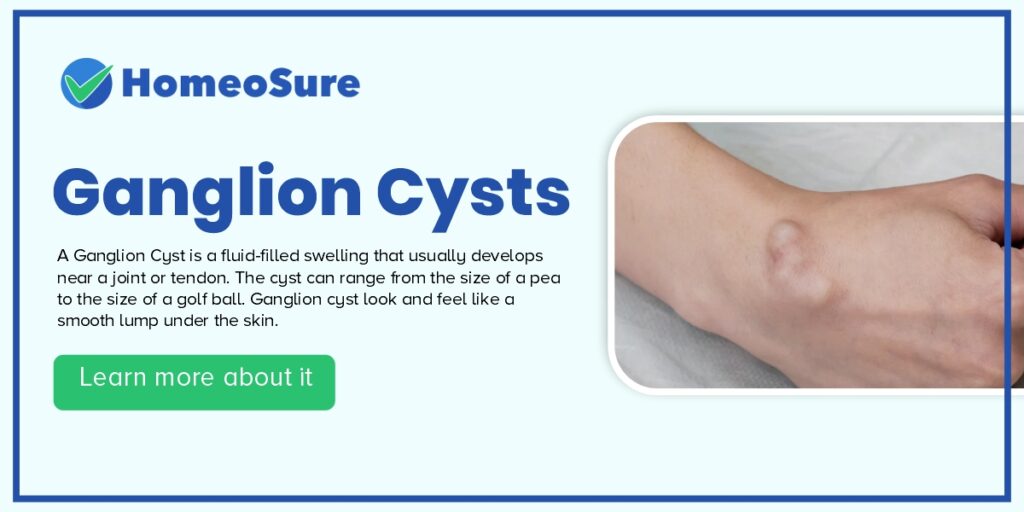Ganglion Cysts
A Ganglion Cyst is a fluid-filled swelling that usually develops near a joint or tendon. The cyst can range from the size of a pea to the size of a golf ball. Ganglion cyst look and feel like a smooth lump under the skin. They’re made up of a thick, jelly-like fluid called synovial fluid, which surrounds joints and tendons to lubricate and cushion them during movement.
Ganglion Cyst can occur alongside any joint in the body, but are most common on the wrist (particularly the back of the wrist), and the hand and fingers.
Ganglion Cyst are harmless, but can sometimes be painful. If they don’t cause any pain or discomfort, they can be left alone and may disappear without treatment, although this can take a number of years.
It’s not clear why Ganglions form. They seem to occur when the synovial fluid that surrounds a joint or tendon leaks out and collects in a sac.
CAUSES OF GANGLION CYST
The cause of ganglion cysts is not known. One theory suggests that trauma causes the tissue of the joint to break down, forming small cysts that then join into a larger, more obvious mass. The most likely theory involves a flaw in the joint capsule or tendon sheath that allows the joint tissue to bulge out.
Ganglion formation is more common in women (M:F = 1:3) and 70% occur in the late teens and young adulthood. Some joint diseases such as rheumatoid arthritis have been associated with ganglion cysts. Occupational factors play an important role in the development of ganglion. Those occupations that require workers to overuse certain joints such as the wrist and fingers, for instance typewriters, pose a risk for ganglion cysts.
SYMPTOMS OF GANGLION
- Smooth lump (swelling) beneath the skin
- Mostly seen and felt around the wrist joint or hands
- Painless but may cause pain in some cases
- May cause discomfort & restrict motion
- Round or oval
- Contains jelly like fluid
- Size may vary
COMPLICATIONS
- It may cause severe pain, numbness, weakness of muscles due to pressure on adjoining nerve. Also it can limit the range of motion of affected joint. Prolonged immobilization can cause stiffness.
- If on visible areas, may cause cosmetic disfigurement and may look ugly.
- Prolonged case may cause joint dysfunction in some people.
HOMEOPATHIC TREATMENT
Though surgery is the only conventional treatment available, surgery may cause risk of injury to surrounding arteries, veins, nerves etc. Post operative risk of infection, stiffness, scar, adhesion are also present. Moreover recurrence is also possible even after successful surgery.
Homeopathic treatment is targeted towards UPROOTING THE DISEASE and ensuring health with no side effects. For prescribing to an individual, a PLAN OF TREATMENT is followed which involves:
- GETTING THOROUGH UNDERSTANDING OF CASE which includes complete case taking (analyzing patient as an individual) along with patient history and family history
- DIAGNOSIS OF PATIENT AND DISEASE
- INDIVIDUAL ASSESSMENT OF THE CASE
- PRESCRIBING THE MOST SUITABLE INDIVIDUAL CONSTITUTIONAL REMEDY
